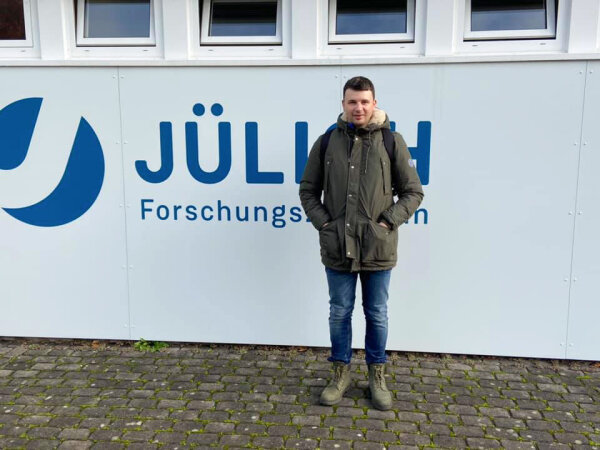
On 2 November – 4 December 2019 Dr. Renaldas Žydelis, researcher of Lithuanian Research Centre for Agriculture and Forestry (LAMMC), Institute of Agriculture, Department of Plant Nutrition and Agroecology had an internship in Agrosphere Institute (IBG-3), Forschungszentrum Jülich GmbH (Germany).
The aim of the internship was to determine the applicability of the AgroC model for modelling hemp growing processes under Lithuanian environmental conditions.
In Lithuania, hemp (Cannabis sativa L.) is a well-known but still rather exotic plant. It has an extensive range of applications and is well suited for biofractionation (biofuels, fiber production, seeds, etc.). The previous studies focused on the issues of the specific period, however, new knowledge is required to grow hemp under the changing climate conditions in order to reassess the key environmental factors significantly limiting the hemp yield potential in the Baltic (nemoral) climate zone.
For this reason, field experiments on fiber hemp were started this year at the experimental base of the LAMMC Institute of Agriculture (co-authors: Dr. Vita Tilvikienė, Ph.D. student Renaldas Ruzgas). However, field experiments alone are not enough to find out how to effectively exploit the potential of this crop yield and its components and what key stresses are most likely to diminish the potential yield of these plants. Fortunately, a widespread use of plant models and their constant improvement may help scientists, farmers, government representatives to find answers to their concerns.
Although modelling of different plant growth and development processes is currently rather widely used all over the world, so far only a few models have been developed for fiber hemp and they are not readily available to anyone interested in these plants or modelling.
The AgroC model developed in Germany can be used to analyse the plant-soil-water system, and the majority of plant and soil parameters can be freely changed depending on the purpose of the study. This allows the model to be adapted not only to different climatic zones but also to model non-traditional plants such as fiber hemp.
Before to the internship (and the beginning of field experiments) fiber hemp modeling project as discussed with Dr. Lutz Weihermüller and Dr. Michael Herbst, the researchers of Julich research centre. It was decided what field measurements were needed to be carried out in order to use the plant model AgroC, developed by the authors mentioned above. In order to appropriately adapt the AgroC model to a new plant, fiber hemp, detailed plant and soil measurements are required. Therefore, soil samples from different soil horizons (16 samples) were taken from the research site in Lithuania and transported to Germany for laboratory analysis.
During the internship, the soil hydraulic characteristics, textural class, soil bulk density and saturated hydraulic conductivity were determined using the HYPROP method in the laboratory of Jülich Research Centre. This data was later used in the AgroC model as input parameters. The data of this year’s (2019) experiment on fiber hemp in Lithuania: leaf, stem and seed yield, leaf area, maximum root depth, moisture and temperature variation in 5 different soil horizons (measured hourly) were used to optimize the model.
The first results obtained showed that the AgroC model reproduced well the significant stages of fiber hemp growth and development, the yield of biomass and individual organs, but at least two years’ experimental data is required for accurate model application. Hemp field experiments are planned to be continued until 2023, and this data will be used to improve the algorithms of the model.
During the internship techniques for proper physical analysis of the soil were mastered as well as a deeper understanding was gained in the field of plant modelling. New ideas for further collaboration were discussed with the internship supervisors.
The internship was funded by EU Structural Funds under Measure No. 09.3.3-LMT-K-712 “Development of scientific competence researchers, other researchers, students through practical scientific activities”.
